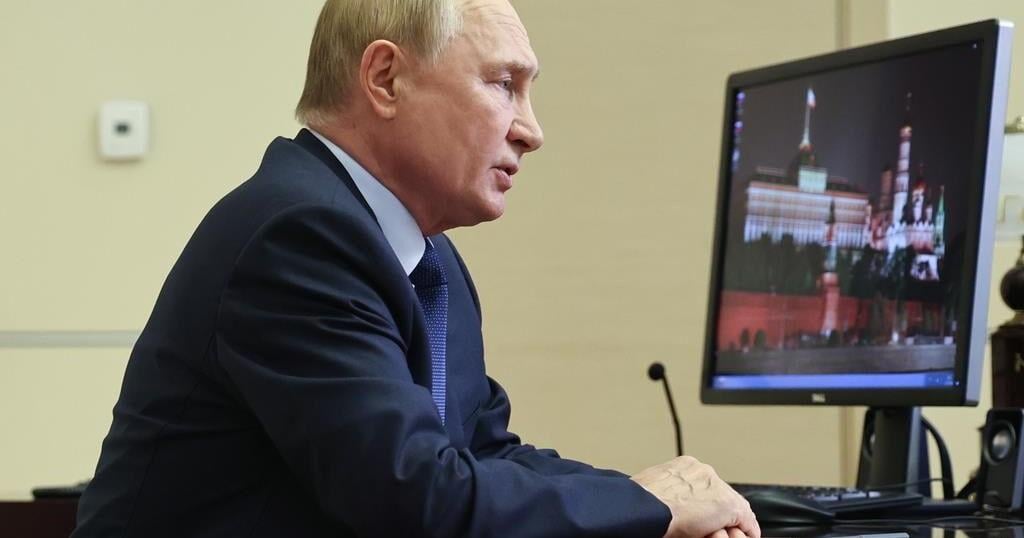A Chinese spy balloon that was shot down by American forces earlier this month flew over a Canadian territory and province before re-entering U.S. airspace, defence officials say.

The surveillance balloon unlawfully entered Canadian airspace between Jan. 30 and 31 – just a few days before its discovery was announced by the Pentagon on Feb. 2 while it hovered over the U.S. Midwest, eventually resulting in its takedown off the coast of the Carolinas on Feb. 4.
NORAD – the continental air defence network – began tracking the balloon as it approached U.S. airspace in late January, the Pentagon said earlier this month. It passed north of Alaska’s Aleutian Islands on Jan. 28 and moved largely over land across Alaska and then into Canadian airspace before crossing back into the U.S. over northern Idaho on Jan. 31.
For the first time since its discovery, Canadian defence officials have now revealed its flight path.
“It came down pretty much from Alaska down into Yukon and into central B.C., so pretty much between the border of Alberta and the coast,” Maj. Gen. Paul Prévost, director of staff with Strategic Joint Staff, told MPs sitting on the House of Commons National Defence committee on Friday.
Canadian Armed Forces infrastructure is in the area, but there was no “infrastructure of significance” along the balloon’s flight path, Prévost added.
The U.S. navy and coast guard have been working to recover pieces of the balloon, which was shot down off the coast of South Carolina after flying across the U.S., for analysis. They’re working to determine if it collected any intelligence from either country.
The public announcement of the balloon’s discovery earlier this month sparked outrage in both countries and prompted U.S. Secretary of State Antony Blinken to cancel a trip to China.
U.S. officials have said China operates a fleet of such balloons, which are a relatively inexpensive and difficult-to-detect method of gathering intelligence. China has claimed responsibility for the balloon but said it was a weather aircraft, not one tied to surveillance or espionage.
The balloon’s discovery also resulted in NORAD adjusting its radar to find similar objects, which led to the shootdown of three unidentified objects over U.S. and Canadian airspace a week later.
U.S. President Joe Biden said Thursday that those objects do not appear to have come from China or any other country, and did not have surveillance capabilities. The search for two of them remains ongoing, while the search for an object that landed in Lake Huron has been called off for now due to poor weather.
Lt. Gen. Alain Pelletier, deputy commander of NORAD, told MPs on Friday the detection, tracking and monitoring of those objects has highlighted some challenges for the defence network.
Due to their small size and slow speed, it has been difficult to detect and track them on radar, and has been challenging to locate them with airborne assets, Pelletier said, adding that NORAD experienced “radar gaps” while tracking the Chinese spy balloon.
“NORAD works every day to improve domain awareness by integrating intelligence and sensor data and reviewing previous data to improve and help us see more,” he said.
“While these objects may not have showcased hostile intent, their proximity to aviation routes, populated areas and sensitive defence infrastructure have raised concerns.”
Pelletier added that the recent events show that the threat to North America has evolved from a northern, long-range aviation approach to a “360-degree threat and from all domains.”
“I believe this is the first time in the history of NORAD that Canada or the U.S. have actually taken kinetic actions against an airborne object in Canadian and American airspace, and it is important that we maintain the necessary capabilities to continue to do so,” he said.
Defence Minister Anita Anand has said the recent developments are an example of the need to modernize NORAD. Over the summer, she announced the federal government would be investing $40 billion over the next 20 years to beef up continental defence.
The financing will focus on five specific areas, Anand said at the time.
Those will include a new northern approaches surveillance system, an Arctic over-the-horizon radar system for early warning radar coverage from the Canada-U.S. border to the Arctic Circle, as well as a polar over-the-horizon radar system to provide early radar coverage.
A new system called “Crossbow” will also see early warning sensors deployed across the country to identify incoming threats, and the modernization of NORAD will also launch a space-based surveillance project to use satellites to probe for threats approaching from around the world.
Jedidiah Royal, the U.S. assistant defence secretary for the Indo-Pacific, told a U.S. Senate Appropriations subcommittee last week that the military has “some very good guesses” about what intelligence China was seeking.
When pressed on what information the balloon was specifically trying to gather, Royal said U.S. officials “are learning more as we exploit the contents of the balloon and the payload itself.”
“We understand that this is part of a broader suite of operations that China is undertaking to try to get a better understanding of the U.S.,” Royal said.
The balloon was spotted over Montana on Feb. 2, which is home to one of America’s three nuclear missile silo fields at Malmstrom Air Force Base, according to a U.S. official who spoke on condition of anonymity to discuss sensitive information at the time.
Canadian relations with China have been uneasy for several years, intensifying in recent months over allegations of attempts to influence and interfere in Canadian affairs.
— with files from Amanda Connolly


























